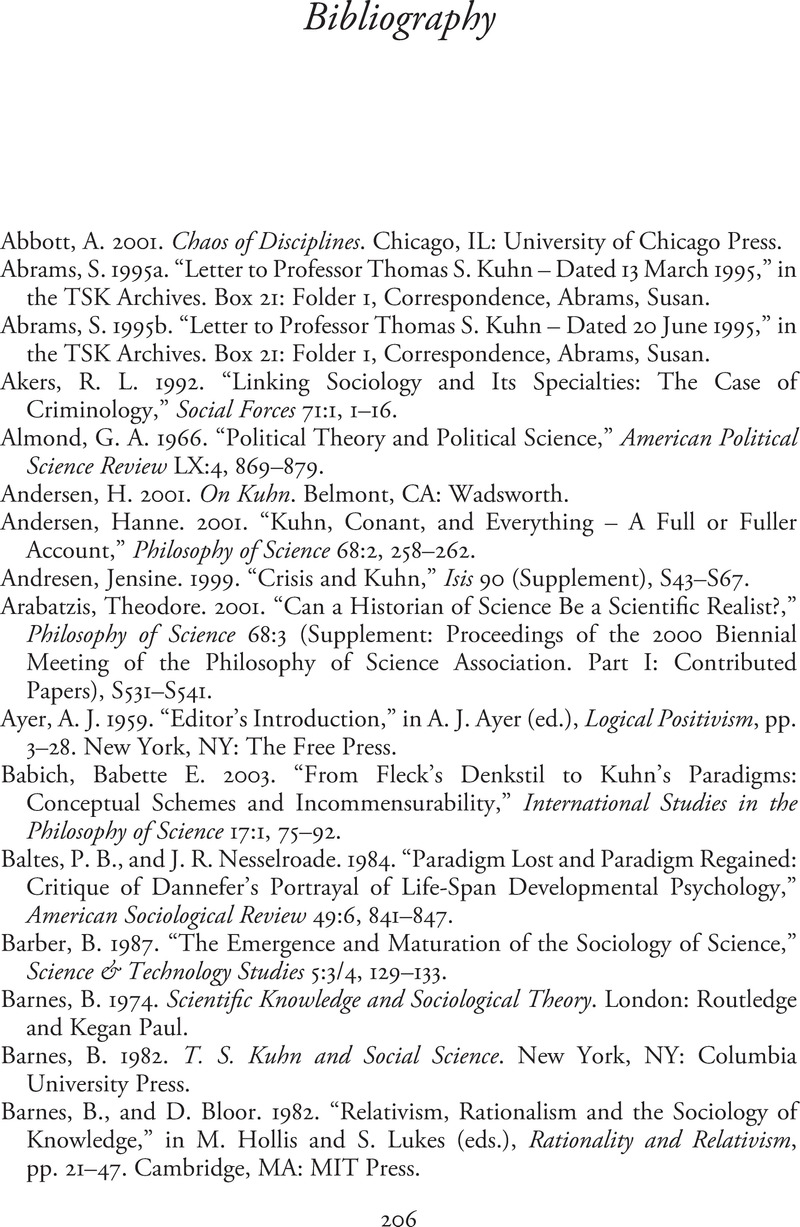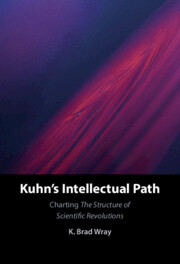Book contents
- Kuhn’s Intellectual Path
- Kuhn’s Intellectual Path
- Copyright page
- Dedication
- Epigraph
- Contents
- Acknowledgments
- Introduction
- Part I The Groundwork for Structure: Harvard 1947 to 1955
- Part II The Unexpected Uptake: Kuhn and the Social Sciences
- Part III Kuhn and the History of Science
- Part IV Kuhn’s Philosophical Legacy
- Bibliography
- Index
- References
Bibliography
Published online by Cambridge University Press: 02 February 2022
- Kuhn’s Intellectual Path
- Kuhn’s Intellectual Path
- Copyright page
- Dedication
- Epigraph
- Contents
- Acknowledgments
- Introduction
- Part I The Groundwork for Structure: Harvard 1947 to 1955
- Part II The Unexpected Uptake: Kuhn and the Social Sciences
- Part III Kuhn and the History of Science
- Part IV Kuhn’s Philosophical Legacy
- Bibliography
- Index
- References
Summary

- Type
- Chapter
- Information
- Kuhn's Intellectual PathCharting <I>The Structure of Scientific Revolutions</I>, pp. 206 - 228Publisher: Cambridge University PressPrint publication year: 2021



